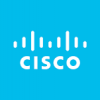Reading Time: 2 minutesTintri Cloud Connector tightly integrates Tintri Enterprise Cloud to public clouds, such as Amazon Web Services, and private clouds that use public cloud APIs. The common use case it to extend your data protection and disaster recovery strategy with secure cloud connectivity for long-term data retention. You can send local snapshots to cloud and recover to your Tintri storage systems in minutes to protect, archive and recover your mission-critical on-premises applications.
Browsing Posts in vDesign

Reading Time: < 1 minuteNeil Anderson, from Flackbox, has build an amazing free Cisco CCNA Lab Guide recently which can be used to pass the CCNA exam or as a configuration reference for Cisco routers and switches. There’s a few free guides online but they all cover old out of date exam topics and aren’t great quality, but this is guide really complete (350+ pages), up to date, with good quality and simple, which people can use completely for free.
Reading Time: 2 minutesVMware has just released the new major version of NSX-T 2.0 to provides an agile software-defined infrastructure to build cloud-native application environments. When Nicira product has been released was for Linux and physical platform, but after the VMware’s acquisition has been re-engineered to be integrated in the vSphere platform, with the new name of VMware NSX (now NSX-v). NSX-T is again a version for (physical) Linux system designed for management, operations, and consumption newtork resources insied a (development) organizations. NSX-T allows IT and development teams to choose the technologies best suited for their applications.
Reading Time: 3 minutesRVtools is a great tools to inventory a virtual infrastructure based on VMware vSphere, with or without vCenter Server (works great also on standalone ESXi hosts). RVTools supports ESX Server 3.5, VirtualCenter 2.5, ESX Server 3i, ESX Server 4i, VirtualCenter 4.x, ESX 4.x, VirtualCenter 5.0, VirtualCenter Appliance, ESX 5.0, VirtualCenter 5.5, ESX 5.5, VirtualCenter 6.0, ESX 6.0, VirtualCenter 6.5 and ESX 6.5, so all you can have (also legacy versions) in a datacenter. And it’s totally free.
Reading Time: < 1 minuteAfter the beta period, Nakivo is announcing the GA release of NAKIVO Backup & Replication v7.2 with some interesting new features. The new v7.2 comes with the following new features:
Reading Time: 2 minutesActually there are two different platform where you can run the vCenter Server components (including the PSC): Windows (both physical or virtual) or Linux (only with the vCSA, based on PhotonOS). Initially there was only a Windows version, then the vCenter Server Appliance (vCSA) was first introduced with the release of vSphere 5.0 and has since evolved to become the definitive deployment model for vCenter Server. Starting with vSphere 6.5 the vCSA has become the first choice and has raised the level of vCenter with new functionalities (not available on the Windows version).
Reading Time: 3 minutesWestern Digital Corp. and Tegile Systems announced that they have entered into a definitive agreement under which Tegile, a leading provider of flash and persistent-memory storage solutions for enterprise data center applications, will be acquired by Western Digital. Financial terms of the transaction were not disclosed. The acquisition is expected to close the week of Sept. 4, 2017, upon satisfaction of certain closing conditions as set forth in the definitive agreement between the parties.










